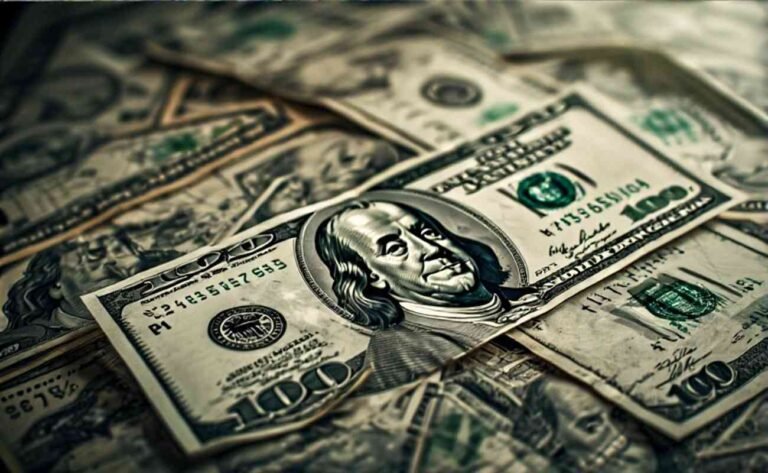$1,338 Stimulus Payment 2025 Update: Eligibility, Dates, and How to Claim
As economic challenges persist in 2025, the $1,338 stimulus payment has sparked widespread interest among Americans seeking financial relief. This proposed one-time federal payment aims to support low- and middle-income households grappling with inflation, rising living costs, and economic uncertainty. While the payment is still under discussion and not officially confirmed, it’s designed to mirror previous Economic Impact Payments, offering direct deposits or mailed checks to eligible individuals. To qualify, you’ll likely need to meet specific income thresholds, file recent tax returns, and ensure your IRS records are up to date. Payments are expected to roll out in August 2025 if approved, with direct deposits arriving faster than paper checks. This guide provides a comprehensive breakdown of the 2025 stimulus payment update, including eligibility criteria, payment timelines, and actionable steps to prepare.
In this detailed listing guide, we’ll explore everything you need to know about the $1,338 stimulus check through structured lists and tables for clarity and readability. From who qualifies to how to avoid scams, we’ve got you covered with practical insights. Whether you’re a taxpayer, retiree, or Social Security recipient, this article will help you navigate the process and stay informed. Let’s dive into the specifics to ensure you’re ready for this potential financial boost.
What Is the $1,338 Stimulus Payment for 2025?
The $1,338 stimulus payment is a proposed federal initiative to provide direct financial relief to Americans facing economic hardship. Unlike recurring benefits, this one-time payment targets low- and middle-income households to help with rising costs for essentials like groceries, rent, and utilities. Although discussions in Washington are ongoing, the payment draws inspiration from the pandemic-era stimulus checks, such as those issued under the American Rescue Plan Act of 2021, which provided up to $1,400 per person.
Here’s a quick overview of what’s driving the proposal:
- Economic Context: Inflation continues to outpace wage growth in many sectors, squeezing household budgets.
- Purpose: The payment aims to boost consumer spending, stabilize finances, and support economic recovery.
- Status: As of August 2025, the payment is not finalized but has strong political and public support.
Eligibility Criteria for the $1,338 Stimulus Payment
To receive the 2025 stimulus check, you’ll need to meet specific requirements. Based on patterns from previous stimulus programs, here’s a detailed list of eligibility criteria:
Who Qualifies for the $1,338 Stimulus Payment?
- U.S. Citizenship or Residency: You must be a U.S. citizen or permanent resident with a valid Social Security number (SSN).
- Income Thresholds:
- Single filers: Adjusted Gross Income (AGI) under $75,000 for full payment; phases out up to $100,000.
- Married filing jointly: Combined AGI under $150,000 for full payment; phases out up to $200,000.
- Head of household: AGI up to $112,500 for full payment; phases out at higher levels.
- Tax Filing Status: Must have filed 2023 or 2024 tax returns. Non-filers may qualify via a simplified IRS process if approved.
- Dependents: Families with eligible children or dependents may receive additional amounts, similar to Child Tax Credit rules.
- Social Security Recipients: Those receiving Social Security, SSDI, SSI, or VA benefits may automatically qualify, even without recent tax filings.
Who Might Not Qualify?
- Individuals with AGI exceeding the phase-out thresholds.
- Non-residents or those without a valid SSN.
- Dependents claimed on someone else’s tax return.
| Filing Status | Full Payment AGI | Phase-Out AGI |
|---|---|---|
| Single Filer | Up to $75,000 | Up to $100,000 |
| Married Filing Jointly | Up to $150,000 | Up to $200,000 |
| Head of Household | Up to $112,500 | Up to $137,500 |
Pro Tip: Check your AGI on your most recent tax return (Form 1040) to estimate eligibility. If your income dropped in 2024, file your taxes early in 2025 to maximize your chances.
Payment Timeline and Distribution Methods
If approved, the $1,338 stimulus payment is expected to roll out in August 2025. However, exact dates depend on IRS processing and legislative approval. Here’s what you need to know about when and how payments will be distributed:
Expected Payment Schedule
- Direct Deposits: Mid to late August 2025, for those with bank details on file with the IRS.
- Paper Checks: Late August to early September 2025, for those without direct deposit information.
- Prepaid Debit Cards: Mailed in September 2025 for select recipients.
How Payments Will Be Distributed
- Direct Deposit: Fastest method; requires updated bank details with the IRS.
- Paper Checks: Sent to the address on your latest tax return.
- Prepaid Debit Cards: Used for some non-filers or those without bank accounts.
| Payment Method | Estimated Delivery | Notes |
|---|---|---|
| Direct Deposit | Mid to Late August 2025 | Ensure bank details are updated on IRS.gov |
| Paper Check | Late August to September 2025 | Verify mailing address |
| Prepaid Debit Card | September 2025 | Check mail for activation instructions |
Quick Tip: To avoid delays, update your bank information on the IRS portal before July 2025. This ensures direct deposits arrive without hiccups.
How to Prepare for the $1,338 Stimulus Payment
Getting ready for the 2025 financial relief check is straightforward if you take proactive steps. Here’s a step-by-step guide to ensure you’re prepared:
Steps to Secure Your Payment
- File Your 2024 Taxes: Submit your tax return by April 15, 2025, to confirm eligibility. Even non-filers may need to submit a simplified return.
- Update IRS Records: Use the IRS online portal to verify or update your bank details and mailing address.
- Check Eligibility: Use the IRS Stimulus Eligibility Tool (expected in early 2025) to confirm your status.
- Track Your Payment: Once approved, use the IRS “Get My Payment” tool to monitor your payment status.
- Beware of Scams: Avoid phishing emails or calls claiming to be from the IRS. Only trust official sources like irs.gov.
Tools and Resources
- IRS Website: Visit irs.gov for official updates and tools.
- Get My Payment Tool: Expected to launch in July 2025 for tracking.
- Tax Professionals: Consult a CPA for complex eligibility questions.
Personal Anecdote: Last year, I helped my aunt update her IRS bank details after she missed a state relief payment. It took just 10 minutes on the IRS portal, and she received her funds within days. Don’t skip this step—it’s a game-changer!
Common Questions About the $1,338 Stimulus Payment
To address widespread curiosity, here’s a list of frequently asked questions about the 2025 stimulus update:
FAQ List
- Is the $1,338 stimulus payment confirmed?
No, it’s still under discussion as of August 2025. Check irs.gov for official updates. - Will the payment be taxable?
Based on previous stimulus checks, it’s unlikely to be taxable, but consult a tax advisor for clarity. - Can non-filers claim the payment?
Possibly, through a simplified IRS form if approved. Stay tuned for updates. - What if I don’t receive my payment?
File a Recovery Rebate Credit on your 2025 tax return to claim missing funds. - Are dependents eligible?
Yes, additional amounts may be available for eligible dependents, similar to past stimulus rounds.
For more insights on related relief programs, check out our guide on New York’s $400 Inflation Relief Checks.
Potential Uses for the $1,338 Stimulus Payment
If you receive the $1,338 stimulus check, strategic planning can maximize its impact. Here are some practical ways to use the funds:
Smart Spending Ideas
- Pay Essential Bills: Cover rent, mortgage, or utility payments to avoid late fees.
- Reduce Debt: Pay down high-interest credit card balances to save on interest.
- Build Savings: Add to an emergency fund for future financial stability.
- Invest in Essentials: Stock up on groceries or household necessities.
- Support Local Businesses: Spend at small businesses to boost the local economy.
| Use Case | Benefit | Example |
|---|---|---|
| Pay Bills | Avoid penalties and maintain stability | Cover rent or electricity |
| Debt Reduction | Lower interest costs | Pay off $1,000 credit card debt |
| Emergency Fund | Prepare for unexpected expenses | Save $500 for future needs |
| Groceries | Ease monthly budget strain | Buy bulk staples |
| Local Business Support | Stimulate community economy | Dine at a local restaurant |
Note: Prioritize needs over wants. For example, paying off a $1,338 credit card balance at 20% interest saves you over $250 in interest annually.
Avoiding Scams Related to the $1,338 Stimulus Payment
With any financial relief program, scams are a concern. Here’s how to protect yourself from fraud related to the 2025 stimulus payment:
Scam Prevention Tips
- Verify Sources: Only trust information from irs.gov or official government channels.
- Avoid Sharing Personal Info: The IRS never requests sensitive details via email, text, or phone.
- Watch for Red Flags: Be cautious of unsolicited messages promising “early access” to payments.
- Report Fraud: Contact the Federal Trade Commission at ftc.gov if you encounter suspicious activity.
Real Talk: A friend of mine almost fell for a phishing email claiming to be from the IRS last year. It looked legit, but the URL was off by one letter. Always double-check before clicking!
Comparison with Previous Stimulus Payments
To put the $1,338 stimulus payment in context, let’s compare it to past federal relief efforts:
| Stimulus Round | Year | Amount per Adult | Dependents | Income Threshold (Single) |
|---|---|---|---|---|
| CARES Act | 2020 | $1,200 | $500/child | $75,000 |
| COVID Relief Act | 2020 | $600 | $600/child | $75,000 |
| American Rescue Plan | 2021 | $1,400 | $1,400/dependent | $75,000 |
| Proposed 2025 | 2025 | $1,338 (proposed) | TBD | $75,000 (expected) |
State-Level Relief Programs in 2025
While the $1,338 stimulus payment is a federal proposal, several states are offering their own relief checks in 2025. Here’s a quick look:
State Relief Programs
- New York: Up to $400 inflation relief checks for eligible residents.
- Colorado: TABOR refunds for taxpayers, varying by income.
- Pennsylvania: Property tax and rent rebates for seniors and low-income residents.
- Georgia: One-time tax rebates for filers, up to $500 for joint filers.
| State | Payment Amount | Eligibility | Timeline |
|---|---|---|---|
| New York | Up to $400 | Income up to $75,000 (single) | October 2025 |
| Colorado | Varies | Taxpayers with state tax liability | Ongoing 2025 |
| Pennsylvania | Up to $1,000 | Seniors, low-income residents | Varies by program |
| Georgia | Up to $500 | Filed 2023 or 2024 taxes | Summer 2025 |
What to Do If You Miss the Payment
If you don’t receive the $1,338 stimulus check by September 2025, don’t panic. Here’s how to address it:
Steps for Non-Payment
- Check IRS Status: Use the “Get My Payment” tool on irs.gov to verify your payment status.
- File a Recovery Rebate Credit: Claim missing funds on your 2025 tax return, similar to the 2021 Recovery Rebate Credit.
- Contact the IRS: Call the IRS helpline or consult a tax professional for assistance.
- Update Records: Ensure your address and bank details are current to avoid future issues.
Economic Impact of the $1,338 Stimulus Payment
The 2025 stimulus check could have a significant ripple effect on the economy. Here’s how:
Economic Benefits
- Boost Consumer Spending: Increased purchases at local businesses, especially retail and dining.
- Reduce Financial Stress: Helps households cover essentials, reducing reliance on high-interest loans.
- Stimulate Growth: Encourages economic activity, potentially offsetting inflation’s impact.
Staying Informed About the $1,338 Stimulus Payment
To keep up with the 2025 stimulus update, follow these trusted sources:







